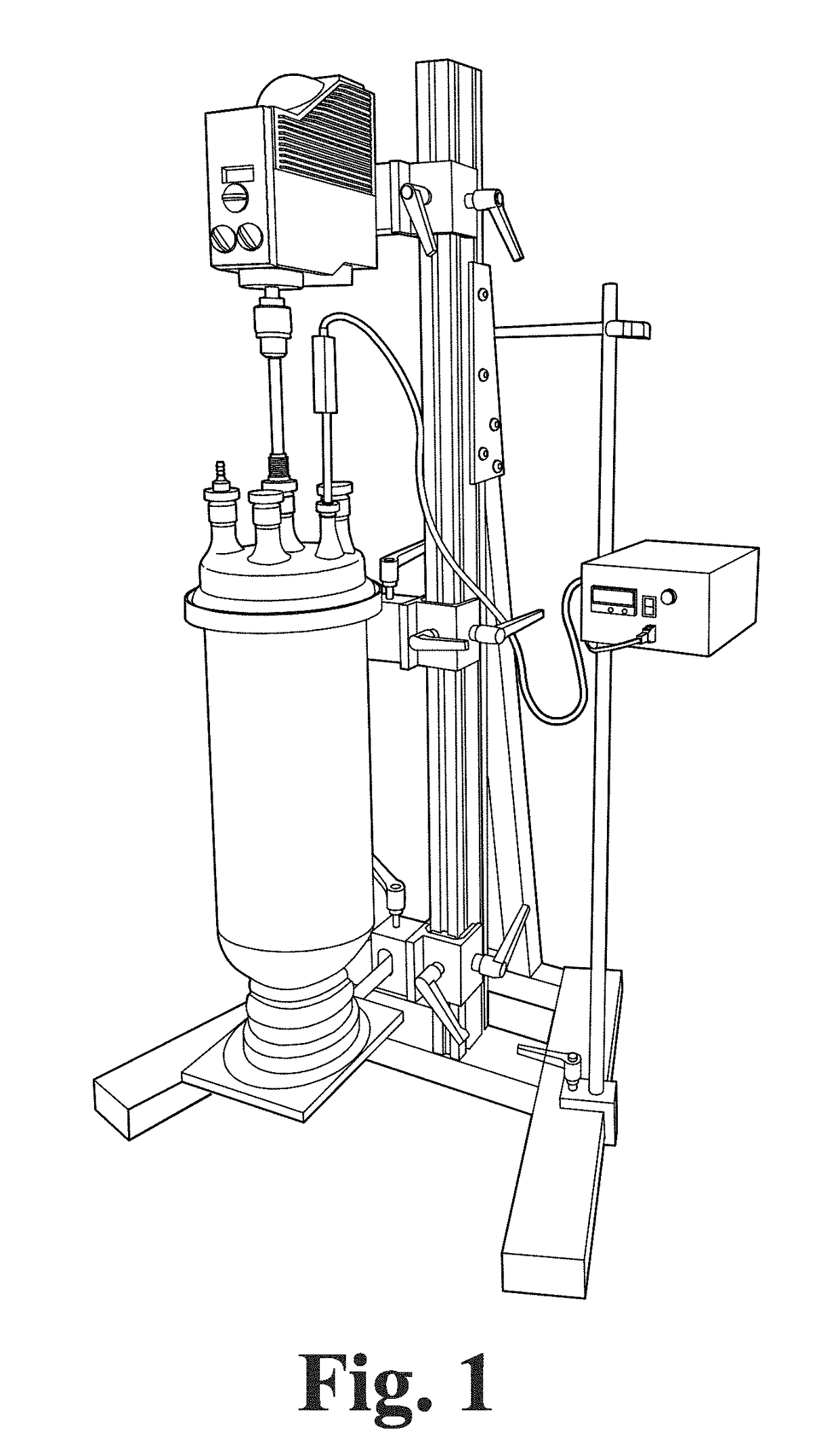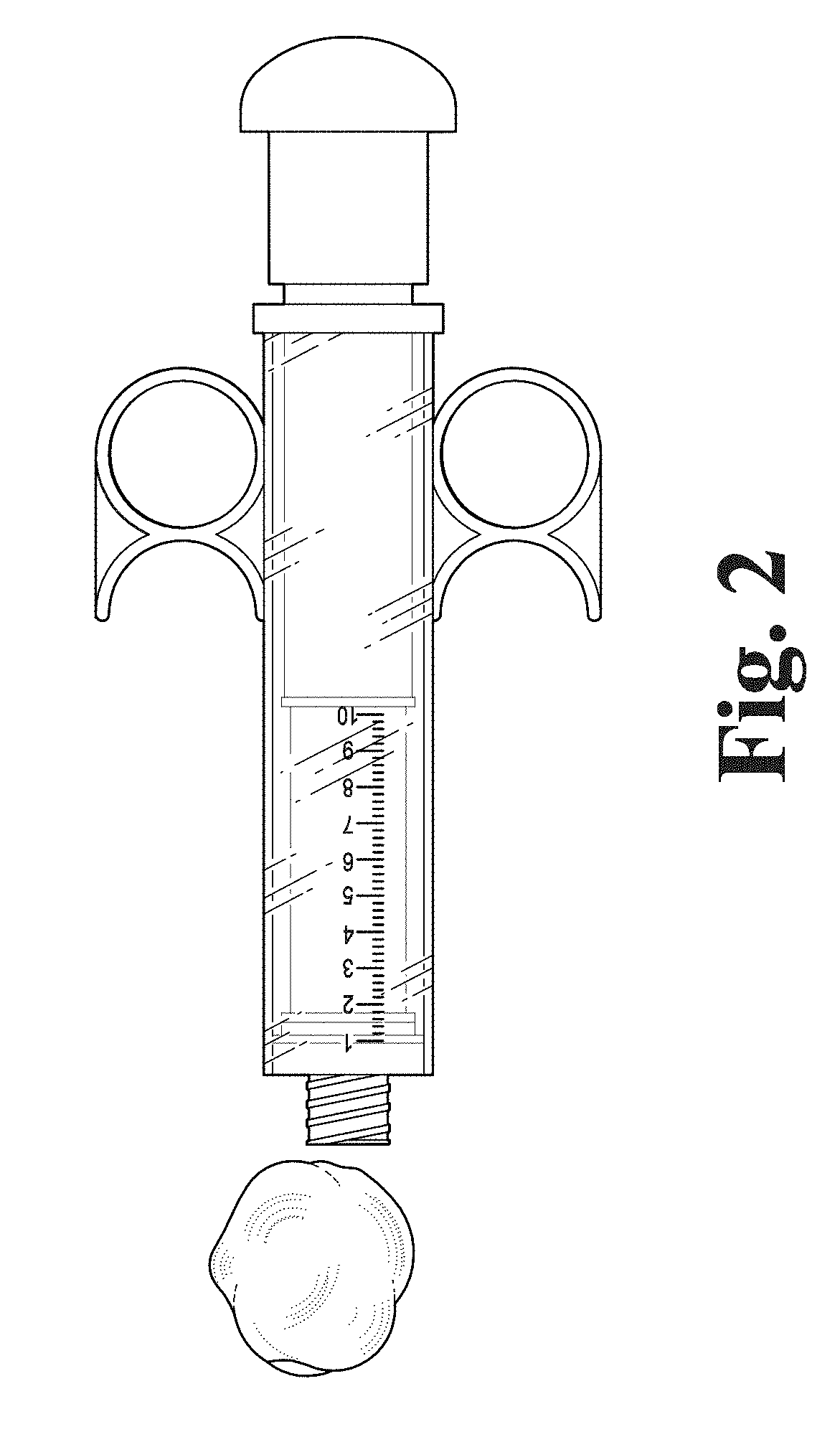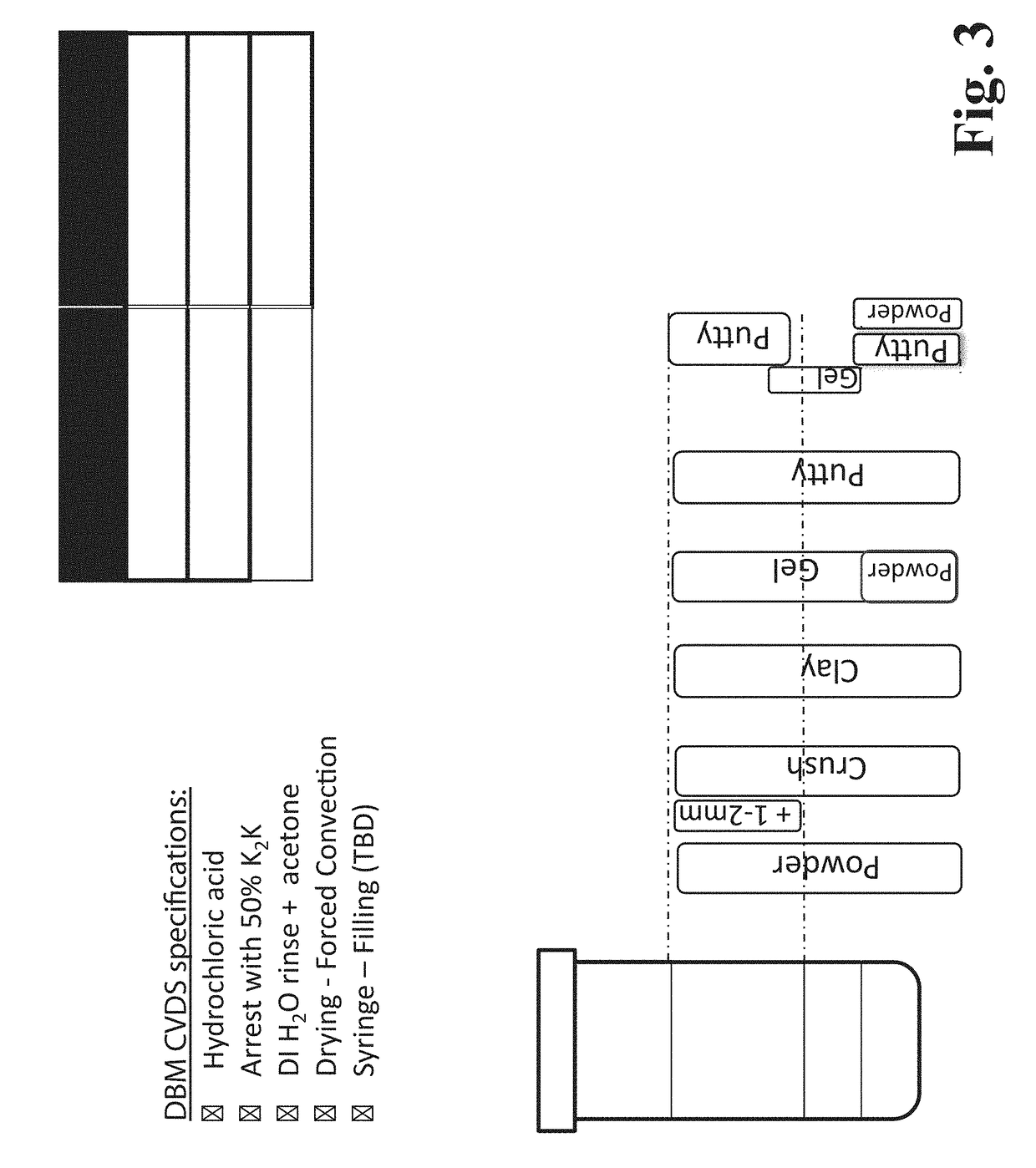Bone matrix compositions and methods for their preparation and use
a bone matrix and composition technology, applied in the field of mammalian tissue engineering and regeneration, can solve the problems of increasing patient recovery time, increasing patient discomfort, and relating to histocompatibility, and achieves the effects of reducing bio-burden, reducing patient discomfort, and reducing patient pain
- Summary
- Abstract
- Description
- Claims
- Application Information
AI Technical Summary
Benefits of technology
Problems solved by technology
Method used
Image
Examples
example 1
[0156]An illustrative preparation of a BM under CVDS conditions in accordance with one embodiment of the disclosed invention. The following is a list of the raw materials used in this illustrative example: ˜420 g of ground bone powder (particle size <1 mm); ˜4300 ml of 1N Hydrochloric Acid (HCl) (pre-warmed to 37° C.); 40 L of 10% Potassium Phosphate Buffer solution (K2K), pre-cooled to 4° C.; 2 L of Deionized Water, pre-cooled to 4° C.; 4 L of Acetone, pre-cooled to 4° C.; pH test strips; spray bottle filled with Acetone. The following is a list of additional glassware used: 12×2 L Pyrex beakers; 4×Pyrex drying trays; 1×Pyrex mixing bowl.
[0157]An Instatherm® 6 L reactor (e.g., from Ace Glass, Inc.) was used in this preparation. A typical apparatus set-up, including the reactor, mechanical stirrer, thermocouple, and other associated parts, is shown in FIG. 1. The set-up in FIG. 1, including all of its components, should be recognizable by those skilled in the art. The procedure was ...
example 2
[0169]A Second Illustrative Preparation of a DBM under CVDS Conditions in Accordance with the Invention. The following is a list of the raw materials used in this illustrative example: 289.7 g of ground bone powder (particle size 1 mm); ˜4200 ml of 1N HCl; 12 L of 0.5M Potassium Phosphate Buffer solution (K2K).
[0170]The procedure was carried out under sterile conditions, including the following. The demineralization apparatus was set up in a manner similar to the preceding example. The stirrer was turned on and run at 400 rpm, and the 4 L of 1N HCl was added slowly with heating. After all of the HCl was in the vessel, the stirring rate was increased to 600 rpm, and heating was continued up to a temperature of ˜55° C. The lid plugs were removed, the stirring rate was increased to 800 rpm, then to 1000 rpm, and the bone powder was added slowly via a funnel during about 6 minutes, rinsing the last portion of bone powder with 250 mL of 1N HCl pre-warmed to 37° C. After about 1.5 h, heat...
example 3
[0173]In this illustrative example, a DBM procedure is carried out in a manner similar to that described in Example 1 above, using 1N HCl, arresting with 50% phosphate buffer, rinsing sequentially with deionized water and acetone, and allowing the layers to separate into a bottom “Pulp” layer, a middle “Cream” layer, and an upper “White” layer, as depicted in FIG. 3. The layers are isolated and dried. As depicted in FIG. 3, if bone powder having particle size distribution (PSD) of 1-2 mm is used, DBM components (i.e., dried layers) are obtained that are in the form of a powder, a “crush” or a clay. The clay or crush have mineralized particles with a gritty “honeycomb” feel. If bone powder having PSD of <1 mm (e.g., 200-800 microns) is used, then DBM components are obtained that are in the form of a powder, a putty, and a gel (see FIG. 3). It is noteworthy that all of the components contain relatively high concentrations of various BMPs, as described later below and as evidenced in t...
PUM
| Property | Measurement | Unit |
|---|---|---|
| particle size | aaaaa | aaaaa |
| temperature | aaaaa | aaaaa |
| temperature | aaaaa | aaaaa |
Abstract
Description
Claims
Application Information
 Login to View More
Login to View More - R&D
- Intellectual Property
- Life Sciences
- Materials
- Tech Scout
- Unparalleled Data Quality
- Higher Quality Content
- 60% Fewer Hallucinations
Browse by: Latest US Patents, China's latest patents, Technical Efficacy Thesaurus, Application Domain, Technology Topic, Popular Technical Reports.
© 2025 PatSnap. All rights reserved.Legal|Privacy policy|Modern Slavery Act Transparency Statement|Sitemap|About US| Contact US: help@patsnap.com



